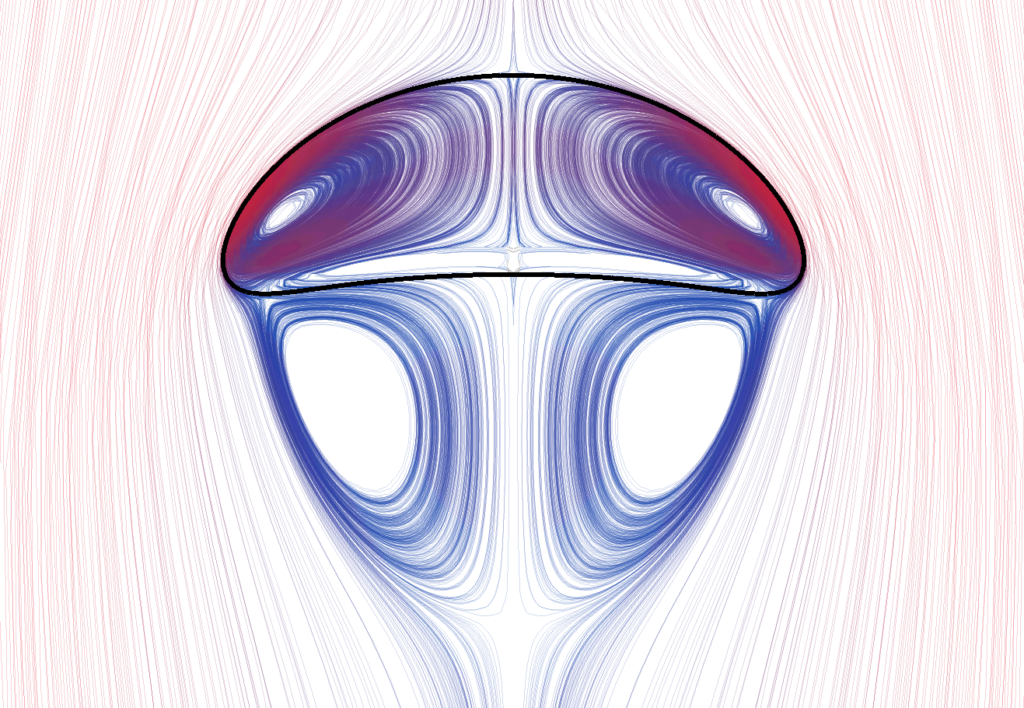Mathieu Coquerelle
Contact
Mathieu COQUERELLE
Laboratoire I2M
Université de Bordeaux – bât A11
351 cours de la libération
33405 Talence Cedex
mathieu.coquerelle@bordeaux-inp.fr
Positions
- Associate Professor at I2M and ENSEIRB-MATMECA, since Sept. 2015:
- Fluid mechanics and Numerical methods ; specialized in multiphase flows, interfaces dynamic and tracking, level set method, contact line dynamic
- Project: development of the Notus CFD code
- Teaching: multiphase flows, numerical methods, CFD Industrial codes, scientific computing
- Head of the Fluid and Energy specialty of the Matmeca department.
- Former head of the Fluid Mechanics team of the TREFLE/I2M department
- Post-doc. at I2M, Apr. 2014 – Aug. 2015:
- Labex CPU project: « Impact of rain on ocean waves »
- Keywords: multiphase flow, surface tension forces
- Supervisors: Stéphane Glockner, Pierre Lubin, Luc Mieussens, Fabrice Véron
- Ph.D. at Laboratoire Jean Kuntzmann, Grenoble, Sept. 2004 – Nov. 2008
- Thesis: Fluid-structure interaction computation with vortex methods and applications to image synthesis
- Keywords: fluid-structure interaction, vortex, level set, image synthesis
- Supervisors: Georges-Henri Cottet and Marie-Paule Cani
- Assistant Professor at ENSIMAG and Université Joseph Fourier
Research interests
Projects
- Ocean waves damping by rain drops
- Surface tension driven flows and contact line dynamic
Physics
- Incompressible Navier-Stokes equations
- Multiphase flow, surface tension, contact line
- Interfaces (reconstruction, transport, phase change, etc.)
Numerics
- Level set methods
- Closest point methods
- Coupled Eulerian-Lagrangian methods
- Interpolation and high-order schemes
- High Performance Computing
Papers (my Research Gate page)
- Félix Henri, Mathieu Coquerelle, Pierre Lubin. An efficient hybrid advection scheme in a level set framework coupling WENO5 and HOUC5 schemes based on kink detection. Under revision. (HAL version)
- Deewakar Sharma, Mathieu Coquerelle, Arnaud Erriguible, Sakir Amiroudine. Adaptive interface thickness based mobility—Phase-field method for incompressible fluids. International Journal of Multiphase Flow, Volume 142, 2021, 103687. (DOI)
- Félix Henri, Mathieu Coquerelle, Pierre Lubin. Geometrical level set reinitialization using closest points method and kink detection for thin filaments, topology changes and two-phase flows. Journal of Computational Physics Volume 448, 1 January 2022 (DOI, HAL version)
- Florian Desmons, Mathieu Coquerelle. A generalized high-order momentum preserving (HOMP) method in the one-fluid model for incompressible two phase flows with high density ratio. Journal of Computational Physics, 2021, 110322. (DOI, HAL version)
- Thanh – Nhan Le, Mathieu Coquerelle, Stéphane Glockner. Numerical simulation of moving contact line in wetting phenomena using the Generalized Navier Boundary Condition. Congrès Français de Mécanique (CFM) 2019. (pdf)
- Mathieu Coquerelle, Stéphane Glockner. A fourth-order accurate curvature computation in a level set framework for two-phase flows subjected to surface tension forces. Journal of Computational Physics, 2016, vol. 305, p. 838-876. (DOI, HAL version)
- Mathieu Coquerelle, Georges-Henri Cottet. A vortex level set method for the two-way coupling of an incompressible fluid with colliding rigid bodies. Journal of Computational Physics, 2008, vol. 227, no 21, p. 9121-9137. (DOI, HAL version)
- Georges-Henri Cottet, Guillaume Balarac, Mathieu Coquerelle. Subgrid particle resolution for the turbulent transport of a passive scalar. Advances in Turbulence XII, 2009, p. 779-782.
- Mathieu Coquerelle, Jérémie Allard, Georges-Henri Cottet, Marie-Paule Cani. A vortex method for bi-phasic fluids interacting with rigid bodies. arXiv preprint math/0607597, 2006.
- Mathieu Coquerelle. Thèse de doctorat : Calcul d’interaction fluide-structure par méthode vortex et application à la synthèse d’images, sous la direction de M.-P. Cani et G.-H. Cottet. Soutenue le 25 septembre 2008 à l’INP Grenoble. (HAL version)
Communications
- F. Henri, M. Coquerelle, P. Lubin. Simulation numérique 3D de chute de goutte de pluie à vitesse terminale. GDR Transinter, Aussois 2019 (pdf).
Ph.D. students
- Félix HENRI (2018-2021): Numerical methods for the simulation of rain drops on ocean waves. (co-guidance with P. Lubin, I2M) (HAL version, in French)
- Thahn Nhan LE (2016-2019): Modeling of the triple contact line (between air, water and a solid) (co-guidance with S. Glockner, I2M)
Internship tutoring
- Alexis CAS: Master 1 thesis (2022): Implementation of a tumor growth model in 3D within Notus CFD (co-guided with Annabelle Collin).
- Hugo SABATER: Master 1 thesis (2022): Improving numerical methods for the advection equation with optimal schemes.
- Icham CHERBLANC: Master 2 thesis (2021): Improving the Level Set Methods with Maximum Likelihood approaches (co-guided with Annabelle Collin).
- Thomas AGOSTINI: Master 1 thesis (2021): Modeling and fast computation of bubble rise in glasses.
- Clément BENAZET: Master 1 thesis (2020): Improving the Closest Point algorithm for Level Set methods.
- Lola ROCAMORA: Master 1 thesis (2019): Study of the free fall of a rain drop until terminal velocity using Notus CFD.
- Patrice SEBASTIANO: Master 1 thesis (2018): Experimenting the epsilon-level set approach for multi-phase flows simulation in Notus CFD.
- Maxime LARGEAUD: Master 1 thesis (2018): Implementation and enhancement of high-order interpolation with Hermite and WENO schemes.
- Nicolas GODINAUD: Master 1 thesis (2018): Implementation of the Particle Level Set method for Notus CFD.
- Florian DESMONS: Master 2 thesis (2017): Understanding, modeling and simulation of the impact of a rain drop on a water wave
- Guillaume DUMAS: Master 1 thesis (2016): Modeling and simulation of the impact of a rain drop on a flat surface
Involvement in Notus CFD
- Specific code development
- Interface advection with level set, phase field and front-tracking methods
- Explicit inertial term for the Navier-Stokes equation
- Continuum Surface Force for surface tension forces
- Closest-point method for curvature computation
- Finite Volume and Finite Difference schemes
- Interpolation and extrapolation with high-order schemes (Lagrange and WENO)
- Verification and validation
- Surface tension
- Rayleigh-Taylor instabilities
- Free surface waves
- Bubble rise
- Water drop(s) fall and impact
Gallery
Applications
Level Set Reinitialization using Closest-Points (as presented in DOI)
3D dam break test case (as presented in DOI)
Impact of a droplet on a liquid pool – Cole III experiment (as presented in DOI)
Axisymmetric simulation, ~ 2M cells, using high-order methods.



